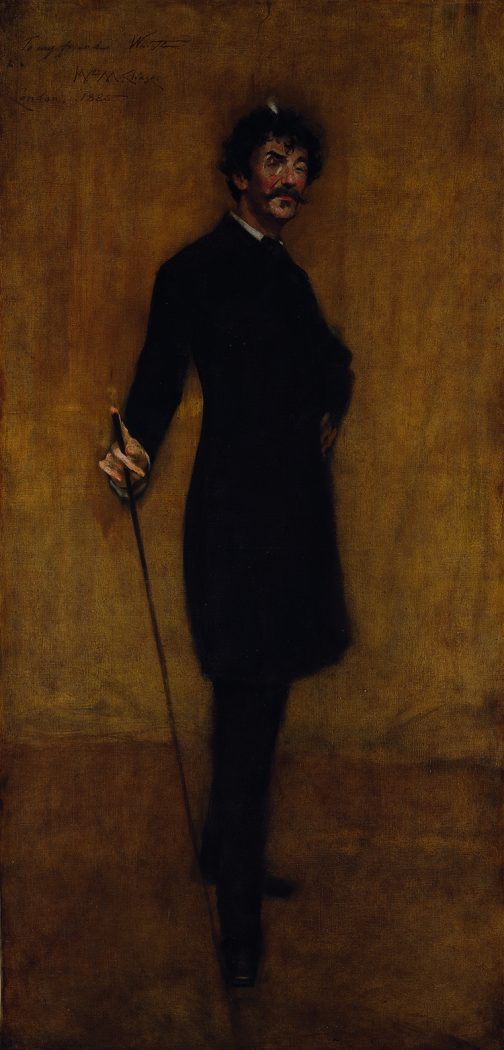
William Merritt Chase, James Abbott McNeill Whistler, 1885. Oil on canvas, 74 1/8 x 36 1/4 in. The Metropolitan Museum of Art, New York, Bequest of William H. Walker, 1918
In 1885, William Merritt Chase stopped in London on his way to Madrid to pay a visit to James Abbott McNeill Whistler, the artist whom he had revered since the late 1870s, sharing with him a passion for the ideals of beauty and harmony in art. Upon Whistler’s urging, Chase stayed the summer so that they could sit for each other’s portraits. Their friendly relationship soon deteriorated into bitter quarreling in the face of Chase’s struggle with Whistler’s two-sided personality: “One was Whistler in public—the fop, the cynic, the brilliant, flippant, vain, and careless idler; the other was Whistler of the studio—the earnest, tireless, somber worker, a very slave to his art, a bitter foe to all pretense and sham, an embodiment of simplicity.”
To evoke the public persona of Whistler in his portrait, Chase adopts the technique of his protégé in his use of a limited palette, soft background, and thinly applied application of paint. Chase’s portrait captured his sitter’s trademark features: the white lock of hair, bushy eyebrows, carefully waxed mustache, monocle over one eye, and wand. Writing to his wife, Chase reported that his portrait “promises to be the best thing I’ve done.” Whistler, on the other hand, dismissed it as a “monstrous lampoon.” We can only guess what Whistler’s portrait of Chase may have looked like; its whereabouts remain unknown and some suggest that Whistler may have destroyed it.
Elsa Smithgall, Exhibition Curator
